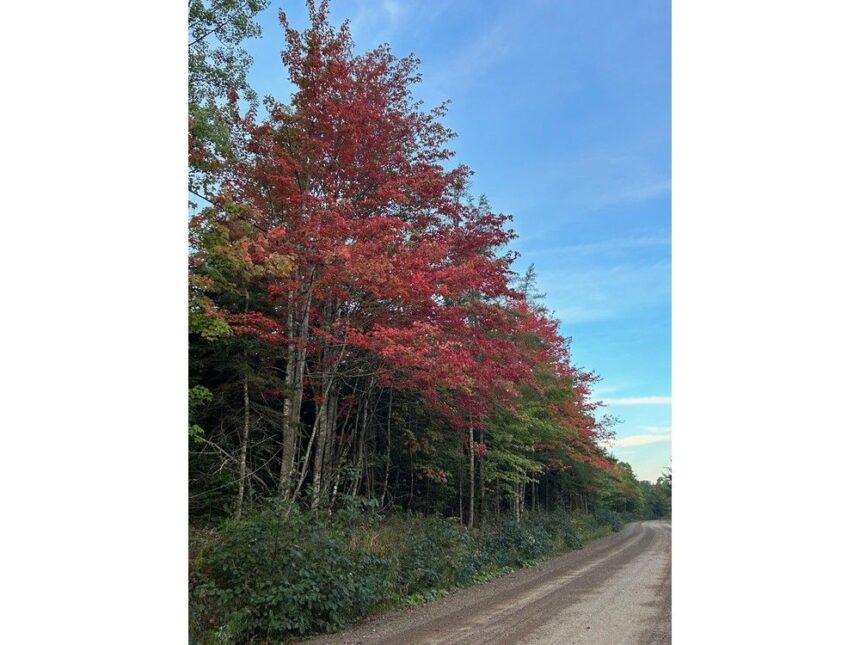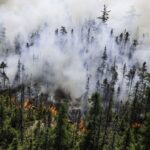The leaves are already starting to change colour on trees in Nova Scotia. Photo by Don Cameron /Truro NewsArticle contentCOLCHESTER – Happy National Forest Week.THIS CONTENT IS RESERVED FOR SUBSCRIBERS ONLY.Subscribe now to access this story and more:Unlimited access to the website and appExclusive access to premium content, newsletters and podcastsFull access to the e-Edition app, an electronic replica of the print edition that you can share, download and comment onEnjoy insights and behind-the-scenes analysis from our award-winning journalistsSupport local journalists and the next generation of journalistsSUBSCRIBE TO UNLOCK MORE ARTICLES.Subscribe or sign in to your account to continue your reading experience.Unlimited access to the website and appExclusive access to premium content, newsletters and podcastsFull access to the e-Edition app, an electronic replica of the print edition that you can share, download and comment onEnjoy insights and behind-the-scenes analysis from our award-winning journalistsSupport local journalists and the next generation of journalistsRegister to unlock more articles.Create an account or sign in to continue your reading experience.Access additional stories every monthShare your thoughts and join the conversation in our commenting communityGet email updates from your favourite authorsSign In or Create an AccountorArticle contentWe have experienced one of the worst droughts in memory. The impacts of these conditions are many, such as dry wells and significant loss of plant growth and plant mortality. There is certainly increased economic costs to farmers and fruit growers, damage to many other natural resource related industries such as inland fishing, campgrounds, forest harvesting and trucking, hunting, and guiding.Article contentArticle contentArticle contentWe Nova Scotians generally enjoy nature and visiting woodlands for recreational and health purposes year-round. When that privilege is taken away from us, we are not happy campers.Article contentOn Aug. 5, the Nova Scotia government made the tough, but justifiable, decision to restrict entering the woods due to the risk of wildfire losses. There were plenty of examples why this was a good decision when one considers the seriousness and devastation caused by wildfires during this time.Article contentImagine getting a visit from the RCMP at your front door to tell you that you have one hour to prepare to evacuate your home for an unknown period of time. My Tree Canada colleague from St. John’s, Newfoundland had this experience along with his wife, after just returning from a stay in the hospital. Try to imagine how you would feel, and how you would react to that order, and the evacuation packing. Fortunately, the Paddy’s Pond fire changed directions so that Bruce and his wife were not required to evacuate, despite the smell of smoke in the area for several days, and having their bags packed at the door.Article contentArticle contentHere in Nova Scotia, we had another summer dominated by wildfire news. The Long Lake fire in Annapolis County grew from 300 hectares on Aug. 13, to 8,000 hectares in about 10 days. It forced more than 1,000 people from their homes and damaged countless properties. The unusually dry conditions allowed the fire to burn deeply and quickly across the landscape. As a result, it is still being patrolled by crews and machines.Article contentUnfortunately, Annapolis County is still so dry that woods access is still restricted there. Fortunately for the rest of us, we are now legally able to enter the woods again carefully in all other counties. This would be a good time for a reminder that approximately 70 per cent of the forests in Nova Scotia are privately owned by individuals, families and organizations. The remaining 30 per cent is Crown land, mostly provincial except for the Federal Park system. It is also important to note that forests are still very dry such that we have to be very careful so that we don’t create the spark that starts another terrible wildfire.
Its time to go back in the woods












